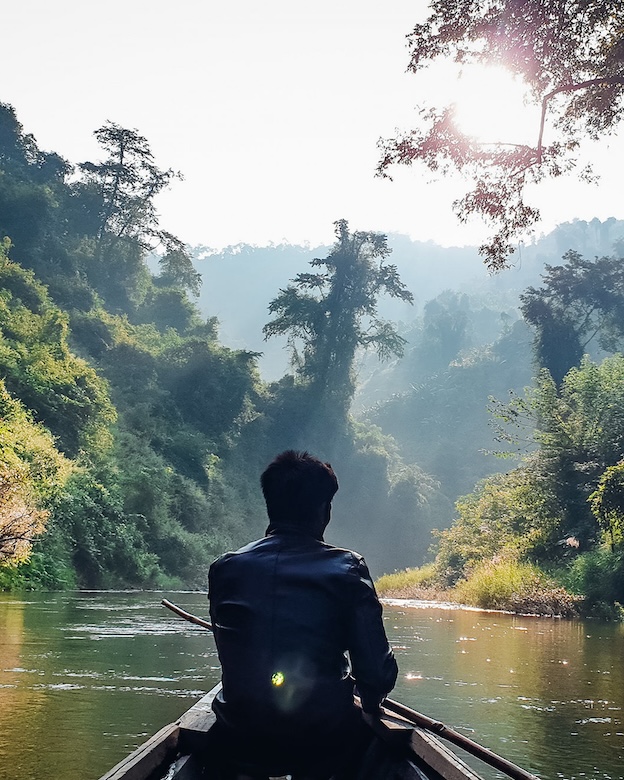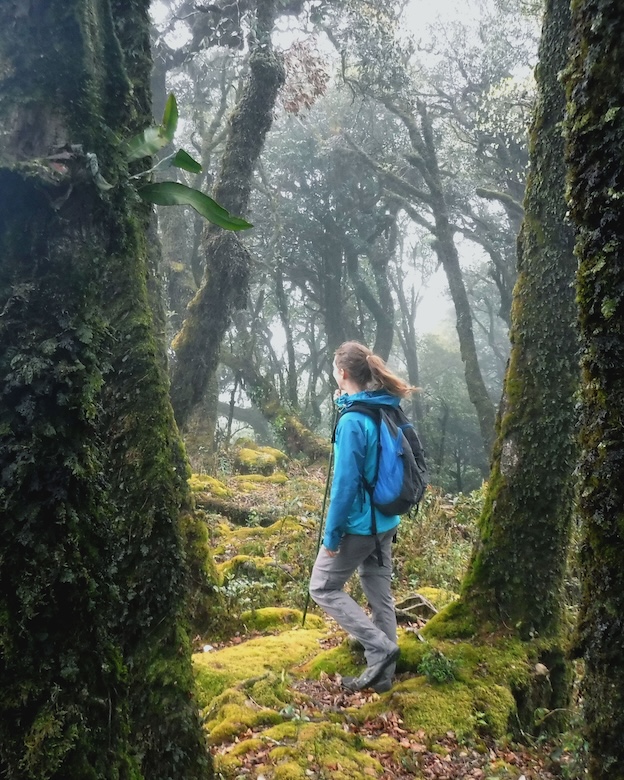Wildlife

Nam Et - Phou Louey National Park is renowned for its rich wildlife biodiversity, home to many critical species, more than fifty mammal species and a high diversity of carnivore species, including at least four feline species, the endangered Dhole wild dog, two bear species. It also hosts one of the largest populations of the Critically Endangered Northern White-cheeked Gibbon.
Over 300 bird species have been recorded in Nam Et-Phou Louey National Park with new species continually being discovered. See what others have recorded on E-bird.
Carnivore Species
Mammal Species
Bird Species
Northern White Cheeked Gibbons
(Nomascus leucogenys)
Status: Critically Endangered
The NEPL NP is home to probably the largest remaining population of the critically endangered Northern white-cheeked gibbon in the world.
These small apes are renowned for their early-morning songs, sung between life-paired mating individuals for the purpose of marking territory and reinforcing pair-bonding.
Northern white-cheeked gibbons belong to the most threatened genus of primates in the world, with all species classified as Endangered and 5 out of 7 classified as Critically Endangered by the IUCN.
Sambar Deer
(Rusa unicolor)
Status: Vulnerable
One of Nam Et-Phou Louey National Park’s largest herbivores, Sambar serve a crucial role as prey for large carnivores and browsers of the local vegetation.
Preferential to lowland river valleys and night-time browsing, these vulnerable deer species can be frequently seen on the Nam Nern River Safari tour and from the wildlife viewing tower at The Nests trekking camp.
Dhole
(Cuon alpinus)
Status: Endangered
Like their cousin the wolf, dholes are exclusively carnivorous pack hunters, requiring large tracks of land with abundant prey. For this reason, they are one of the most endangered carnivores in Asia. They are maintained in Nam Et-Phou Louey National Park due to the park’s large size and availability of prey (Sambar deer and the smaller barking deer).
Oriental small-clawed otter
(Aonyx cinereus)
Status: Vulnerable
NEPL NP is home to the world’s smallest otter species, the Oriental small-clawed otter. With small claws and sensitive toes, it is adept at finding crabs and other crustaceans underwater and in the dark.
Owston's palm civet
(Chrotogale owstoni)
Status: Endangered
Civets are often referred to as cats or weasels, but are equally unrelated to either, being their own family of carnivores.
The rarest and most endangered of the many species of civet in NEPL NP is the Owston’s palm civet, isolated to only a few remote areas of forest around northern Laos and northern Vietnam. These shy, nocturnal creatures are elusive and best spotted using camera traps.
Blyth’s Kingfisher
(Alcedo hercules)
Status: Near Threatened
This kingfisher is high on the to-see list of many birders due to its very narrow geographic range and extreme rarity.
The Nam Nern River tours provide probably some of the best opportunities in the world to see this hard-to-find bird. But learn to identify the kingfishers before you claim this one, there are at least 5 species of kingfisher that you might see in Nam Et-Phou Louey National Park!
Burmese Python
(Python bivittatus)
Status: Vulnerable
While this species has become an invasive nuisance in the Western Hemisphere, here in its native range it is an endangered species. It is one of the largest species of snake in the world and can be found swimming in the Nam Nern River and its tributaries or nesting in the thick brush along its banks.
Wild Cats
Large cats have disappeared faster from Laos than perhaps any other group of mammals due to the high demand for their claws, teeth, bones, and hides; a belief persisting that their strength can be acquired through the possession and consumption of their bodies.
Clouded leopards and Asian golden cats still hang on in Nam Et-Phou Louey National Park, probably one of their last remaining habitats in the country. To continue in this park and others, strong anti-poaching and law enforcement actions are required. The smaller marbled cat and leopard cat still abound in the park, enjoying ample prey and habitat and suffering from less market demand.
Asiatic Black Bears and Sun Bears
(Ursus thibetanus and Helarctos malayanus)
Status: Vulnerable
Like the large cats, bears in Asia suffer heavy rates of targeted hunting for trade in their body parts, particularly their paws and gall bladders.
While bears are classified in the order of carnivores, Asiatic black bears (AKA moon bears) and Sun bears are, dietary, omnivorous, relying on gorging themselves when food is available. Some of the most important sources of food for bears in Nam Et-Phou Louey are insects nests such as those of bees, wasps, and termites.

Wildlife Ecotourism
To provide wildlife-friendly livelihood opportunities for local people, the ecotourism program began in 2010. Visitors can enter NEPL NP by participating in the park's wildlife eco-tours.
All tours are designed to create a direct link between conservation and tourism, ensuring that visitor fees positively impact local efforts to protect endangered wildlife. Join us in preserving this unique biodiversity and supporting sustainable livelihoods for local communities.

